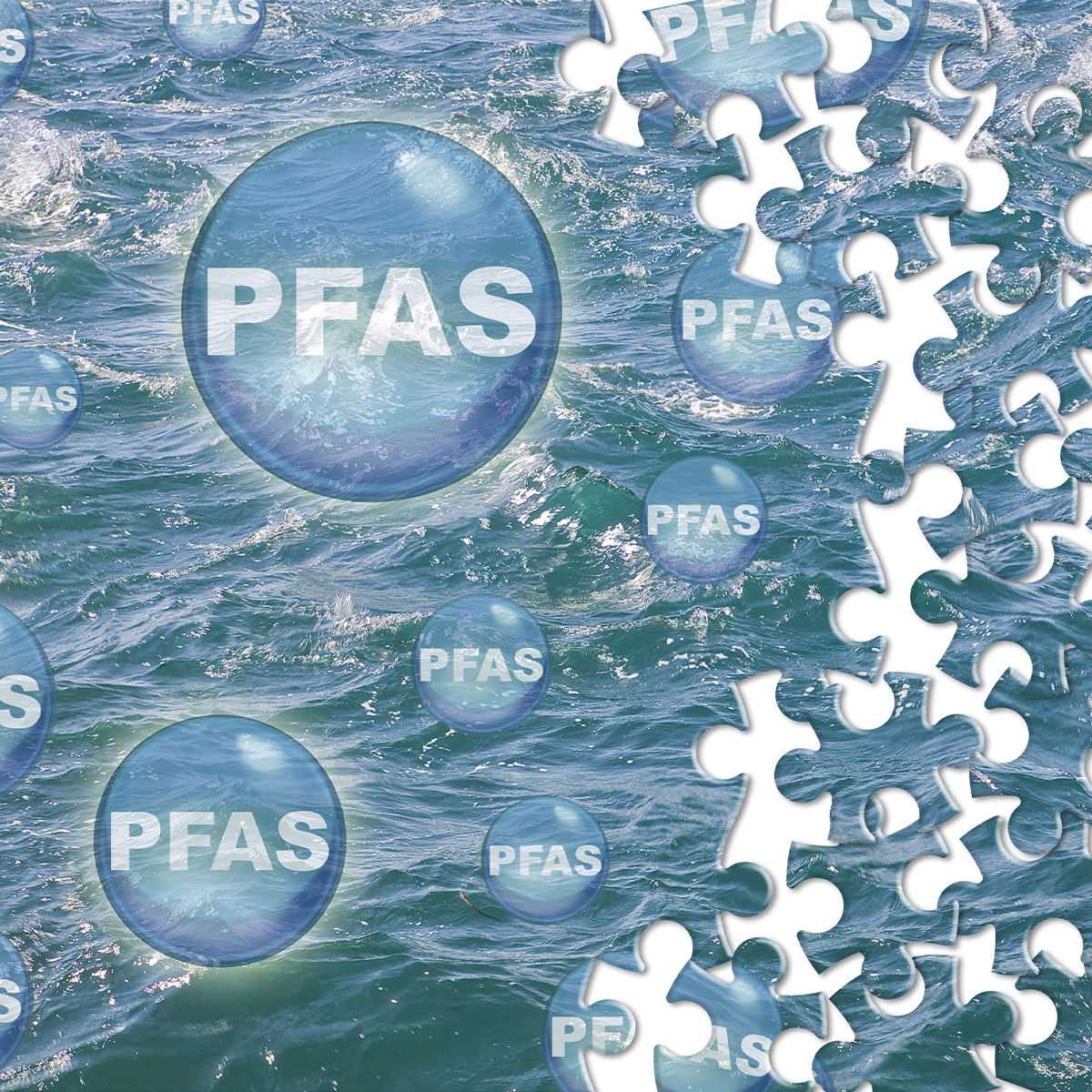-
Property & Casualty
Property & Casualty Overview

Property & Casualty
We offer a full range of reinsurance products and the expertise of our talented reinsurance team.
Expertise
Publication
Structured Settlements – What They Are and Why They Matter
Publication
PFAS Awareness and Concern Continues to Grow. Will the Litigation it Generates Do Likewise?
Publication
“Weather” or Not to Use a Forensic Meteorologist in the Claims Process – It’s Not as Expensive as You Think
Publication
Phthalates – Why Now and Should We Be Worried?
Publication
The Hidden Costs of Convenience – The Impact of Food Delivery Apps on Auto Accidents
Publication
That’s a Robotaxi in Your Rear-View Mirror – What Does This Mean for Insurers? -
Life & Health
Life & Health Overview

Life & Health
We offer a full range of reinsurance products and the expertise of our talented reinsurance team.

Publication
Key Takeaways From Our U.S. Claims Fraud Survey
Publication
Favorite Findings – Behavioral Economics and Insurance
Publication
Individual Life Accelerated Underwriting – Highlights of 2024 U.S. Survey
Publication
Can a Low-Price Strategy be Successful in Today’s Competitive Medicare Supplement Market? U.S. Industry Events
U.S. Industry Events
Publication
The Latest in Obstructive Sleep Apnea -
Knowledge Center
Knowledge Center Overview

Knowledge Center
Our global experts share their insights on insurance industry topics.
Trending Topics -
About Us
About Us OverviewCorporate Information

Meet Gen Re
Gen Re delivers reinsurance solutions to the Life & Health and Property & Casualty insurance industries.
- Careers Careers
Risks of Underinsurance in Property and Possible Regulation

November 06, 2023
Leo Ronken
Region: Europe
English
Deutsch
In the past, the topic of underinsurance was occasionally covered in articles and press releases, but it played only a minor role due to low inflation rates. In addition, policyholders often underestimated the risk that their company could suffer a total loss and, consequently, tended to set a lower sum insured. In Business Interruption insurance in particular, the reconstruction period was often not sufficiently estimated when setting the liability period; instead of the necessary 18 or 24 months, people were often content with 12 months. Due to market conditions in recent years, many insurance contracts – especially so‑called manuscript wordings (policies that were formulated specifically for a certain risk) – deleted a previously existing underinsurance clause or did not include it, instead incorporating an underinsurance waiver clause.
However, inflation, the war in Ukraine, fluctuating exchange rates, and rising labor and material costs have meant in recent years that a partial or especially a total loss can result in the insured being significantly underinsured. This has often had massive consequences for the insured company and its ability to get full compensation for a loss. Against this background, insurers now are trying to re‑establish clauses on underinsurance in insurance terms and conditions.
This article highlights the topic of underinsurance and the possible forms of underinsurance regulation. We show the potential consequences of underinsurance for the policyholder as well as for the insurer/reinsurer and give advice on how to avoid them.
The State of Affairs
Underinsurance is the term used in Property insurance when the sum insured at the time of the insured event is significantly lower than the insured value. This is a problem that should not be underestimated, because the consequences of underinsurance can be severe. If the sums insured for buildings, furnishings, and inventories, and the expected profit and fixed costs in Business Interruption insurance during the insured liability period are set too low, the insurer will not fully compensate for the damage and costs incurred in the event of a partial or total loss. Instead, the indemnity payment will be reduced according to the proportion between the insured amount and the actual value. This means that the policyholder may not receive enough money to fully repair or replace the damage.
While determining the necessary and factually correct sum insured for smaller commercial risks is manageable, determining and evaluating the sums insured for multinational policies with locations around the world is a challenge.
Classic reasons for an insurance value that is too low can be, for example:
- the insured amount was not sufficiently determined when the contract was concluded,
- replacement prices or repair costs are underestimated,
- the agreed liability period was set too low, e.g., longer delivery times for plants or equipment to be replaced, resulting in an extension of the business interruption,
- the value of the object has increased over time, but the insurance contract has not been updated,
- insured sums or periods of liability were deliberately set too low by policyholders to save on insurance premiums.
Insufficient sums insured or insufficient detachment periods lead to an insurance premium that is calculated too low with regard to the actual value of the company and the associated risk. Too low a premium can have particular consequences for the insurer in the case of non-proportional coverage, because in addition to the fact that it calculates an insurance premium too low for the layer in question, the attachment point as well as the detachment point of the layer are seen as more advantageous than they are in reality. This often leads to an underestimation of the potential loss exposure, e.g., PML/MFL (expected maximum loss), which can result in the insurer writing a higher capacity on a layer than they would have under normal circumstances.
Furthermore, underinsurance can lead to legal problems and disputes between the policyholder and the insurer, e.g., if it is discovered in the event of a claim and the insurance company reduces the payout or denies the claim altogether.
Prevalence of Underinsurance
Underinsurance is a serious, widespread problem for the property insurer, and also for the policyholder. In the United Kingdom (UK), for example, approximately 50% of businesses are said to be underinsured.1 A similar situation is reported in the United States (US).2
In German-speaking countries, it is assumed that companies are underinsured by an average of 20% to 30%.3
In individually agreed Property insurance contracts (manuscript wordings), a waiver of underinsurance may be agreed. If a loss occurs in such a case, the check of the agreed sum insured and the actual insured value is waived. The insurer covers the damage up to the agreed insured amount. This can be very disadvantageous for the property insurer concerned, since it may have to compensate a partial loss up to the agreed sum insured, even though it has charged too low an insurance premium because the sum insured is too low.
Measures to Avoid Underinsurance
To avoid underinsurance, it is important that the policyholder makes an accurate estimate of the value of the property to be insured when the insurance contract is concluded, at the latest. Appraisers or experts can help with this. In the case of an existing insurance contract, it is important to review and update it regularly to ensure that the insured sum corresponds to the current value of the object.
Property insurers have various options for preventing a possible underinsurance situation when designing the insurance contract.
Agreement of an underinsurance clause
Essentially, an underinsurance clause provides that if the value of the insured property at the time of the loss is higher than the amount for which it was insured, the insurance benefit is reduced in proportion to the extent of the underinsurance. For example, if a building is insured for EUR 500,000, but its actual value is EUR 1 million, and a fire causes EUR 200,000 damage to that building, the insurance benefit is reduced by 50% (i.e., to EUR 100,000).
A typical underinsurance clause4 in German-speaking countries reads:
- If the sum insured is lower than the insured value immediately before the occurrence of the insured event, there is underinsurance. In the event of underinsurance, the indemnity pursuant to No. 1 shall be reduced in the ratio of the sum insured to the insured value according to the following calculation formula:
Compensation = amount of loss multiplied by the sum insured divided by the insured value.
If the indemnity for a part of the items insured under an item is limited to certain amounts, these amounts at most shall be taken into account when determining the insured value of the items affected thereby. If the insured value determined in this way results in underinsurance, the indemnity pursuant to No. 1 shall be reduced accordingly. - Whether underinsurance exists must be determined separately for each agreed item.
- The provisions on deductibles under No. 6 and indemnity limits under No. 7 shall apply following a) and b).
In other countries, e.g., US, UK, South Africa, and Australia, an underinsurance clause is known as the “Average Clause”, “Pro Rata Condition of Average”, “Condition of Average”, “Underinsurance Clause” or “Principle of Average”. All aim to ensure that the policyholder establishes a sufficient value for the insured property as well as for the Business Interruption insurance. If the insured value is lower than their actual value at the time of loss or damage, the insurance company reduces the payment in proportion to the established difference between the reported and actual insured value.
Margin clause
A margin clause is a non-standard provision in Commercial Property insurance. It states that if a loss occurs at a particular location, the policyholder may receive, at a stated insured value, a fixed percentage above the insured value stated for that location in the insured’s schedule of values. In other words, in the event of a loss, your insurer will not pay more than a specified percentage of the insured value set forth in the policy.
The maximum insured amount is usually stated as a percentage greater than 100%, e.g., 110% or 125%. A margin clause can be used alone or together with another provision to limit liability per occurrence or per insured location. When both are used together, the margin clause increases the amount the policyholder could recover. Both clauses are typically attached to policies with blanket limits, so they essentially convert blanket limits into specific, per-location limits.
The effectiveness of a margin clause depends on several factors, including the clarity of the wording, the accuracy of the metrics used to determine compliance with the threshold, and the enforceability of the consequences set forth in the clause. In general, the margin clause can be an effective risk management tool, ensuring that the policyholder meets its obligation to regularly review and report the insured values of its properties.
Co‑insurance clause
Under a typical co‑insurance clause, the policyholder agrees to insure the insured property up to a certain percentage of its value. This is usually 80%, 90%, or 100%. If the policyholder insures the property for less than the specified percentage, he or she may be subject to a penalty or a reduction in claim payment. In the latter case, the amount of the loss is multiplied by the ratio between the reported (the insurance limit) and the required sum insured (the value of the insured object at the time of the loss multiplied by the co‑insurance percentage), minus the deductible.
For example, if the insured value is EUR 10 million, but the policyholder insures only EUR 8 million with a co‑insurance of 90%, in the event of a claim the policyholder is underinsured by 10%, i.e., if the claim were EUR 1 million, the policyholder would receive only EUR 0.9 million. The amount that is not payable to the policyholder due to non-compliance with the co‑insurance clause is commonly referred to as a penalty. In Commercial Property insurance, it is sometimes possible to avoid the penalty by using an agreed first loss amount.
Other ways to avoid the consequences of underinsurance
To avoid underinsurance, insurers may include other provisions in the insurance contract that specify the value of the property to be insured. These may include the following:
Price Index / Value Add Clause / Index Linking
This clause sets a specific value for the insured object, an amount agreed between the insurer and the policyholder. In the event of a claim, the insurer pays the agreed amount, regardless of the actual value of the object.
The agreement of a value added is possible for buildings as well as technical and commercial business equipment. In this case, the sum insured agreed upon conclusion of the contract is adjusted annually with a value surcharge based on an agreed price index, e.g., the consumer price index, to reflect the current development in value. The adjustment usually takes place automatically and without the policyholder having to take any action. Normally, this means that the sum insured does not have to be reset every year, provided that no significant additional investments have been made.
The purpose of the value add clause is to ensure that full compensation is provided in the event of a claim, despite increases in insured values due to price increases. There are two different versions of the value add clause: without and with the inclusion of increases in inventory. In the latter case, however, the respective increases in inventory must be reported to the insurer in a timely manner.
In this case, the insured sum is first calculated down to a base year using an index, from e. g., the Federal Statistical Office (Germany), either on the basis of the new price in the year of acquisition or the new price of an appraisal on a specific date. Using this basic sum, the values are then extrapolated from the base year to the respective applicable insurance year using the relevant indices. Since the indices are recalculated every year, the sum insured can thus be extrapolated to the new insurance year in each case.
Nevertheless, underinsurance can occur even with an existing value add clause if, for example, the buildings or machinery were each erected or acquired at considerable discounts or if the acquisition prices for certain equipment have risen at an above-average rate. In some cases, it may then be necessary to manually adjust the sum insured. Ultimately, it must be ensured that investments and increases in inventory are promptly incorporated in the reported sum insured when the value add clause is present.
Agreement of a precautionary insurance sum
The purpose of agreeing a precautionary insurance sum for new and replacement investments is to prevent possible underinsurance — for example, if new machinery is purchased during an insurance period and it is expected that the insurance sum originally agreed in the insurance contract will no longer be sufficient. The new risks must be identified by the next premium payment or the new contract period, and no later than when the insurer makes a new risk inquiry. As a rule, a so‑called fixed precautionary insurance sum or a percentage of the total insurance sum (e.g., 30%) is agreed for these cases. At the end of the insurance period, at the latest, the possible utilization of the precautionary insurance is required by the insurer and, if necessary, taken into account when determining the final insurance premium for the expired insurance period.
Replacement cost clause
This clause ensures that the policyholder is compensated for the cost of replacing the damaged or destroyed property with new property of a similar type and quality. This may include the cost of necessary labor, materials, and other expenses.
Inflation protection clause, also called “Day One” or “Uplift”
This clause is designed to prevent possible underinsurance caused by inflation during the period between the policy inception (or renewal) and the loss event date. Typically, a percentage of 10% to 50% applies. For example, if the value at the start of the insurance or renewal is EUR 10 million and the inflation rate for a loss occurring nine months later is 5%, the insured value at the time of the loss is actually EUR 10.5 million. With this clause, the insured value of the insured object is automatically adjusted over time to reflect changes in the market value caused by inflation.
Post-liability Agreement / Declaration Link Agreement
Predicting business performance for setting the Business Interruption insurance amount is not without its problems. A declaration link agreement attempts to address this problem. To do this, at the beginning of each policy year and before each renewal, the policyholder submits a declaration stating the estimated gross profit expected to be earned in the fiscal year closest to the policy period. The premium at the beginning of the policy year is then calculated by the insurer based on the estimated gross profit and may be adjusted by a premium refund if the estimate is too high and by an additional premium at the end of a policy period if the estimate is too low. Normally, the statement is certified by the policyholder’s auditors within six months of the end of the policy year. The insurer’s liability is (normally) the estimated gross profit plus the surcharge agreed in the insurance contract (e.g., 30%) in case the estimate was too low.
It is particularly important to note that there is no underinsurance clause in declaration-linked policies. The agreed-upon surcharge is made available to offset unforeseen increases in gross profit. It may not be used to facilitate a deliberate under-declaration to obtain a lower premium.
Existence of a value assessment
In this case, the values existing in a company are determined annually by the preparation of an assessment by recognized and sworn property insurers. These values are then used to determine the sum insured in the insurance contract. Since the actual existing values are determined during such a valuation, there can be no underinsurance unless additional investments have been made after the valuation has been prepared.
An appraisal to determine the sum insured is normally prepared for buildings, equipment, inventory, and all other assets of a company. It must also consider additional costs incurred in a claim, such as architects’ fees, any government or planning costs, and, if necessary, value-added tax as well as inflation and appreciation. Therefore, it is important to periodically review and update these valuation/taxes to ensure that they reflect any changes or improvements that have been made to the property. Over time, the value of assets may increase and so may the cost of rebuilding or replacing assets. Care should also be taken to reflect peak, rather than average, inventory levels, for example, as seasonal influences or increased inventory levels may change the amount of insurance required over the course of an insurance year.
Determination and definition of the sum insured for business interruption
To avoid possible ambiguities or misunderstandings for the determination of the required sum insured within the framework of a Business Interruption insurance, the property insurers have included corresponding clarifications in the insurance contract or provided the policyholder with corresponding assistance for its determination, because the determination of the annual gross profit required for the sum insured differs from the usual procedure in accounting. When determining the Business Interruption insurance sum, not only the insured gross profit should be considered, but also the costs and profits to be expected in the future in order to avoid possible underinsurance.
Determining the indemnity period under Business Interruption insurance
Many companies underestimate how long it can take in the event of a loss to restore technical operations or achieve commercial viability. In the current market, for example, it is repeatedly found that a liability period of twelve months is not sufficient to restore operations to their pre-loss level. This can be particularly true when a business is housed in a historic or unusual building that may take longer to rebuild, or when the business has specialized equipment that may take time to recover. In addition, market trends such as longer supply chains and rebuild times due to the shortage of skilled workers in the construction sector are extending recovery times. In this respect, it is advisable to set a fact-based, realistic indemnity period for Business Interruption insurance that is adapted to the respective market conditions.
Agreement of a fixed sum insured or a maximum compensation
Policyholders can agree to a fixed sum insured or to a maximum compensation in their insurance contract. A possible claim will then be settled up to the agreed sum insured. If it turns out that the agreed sum insured is not sufficient, the part of the damage exceeding this amount is uninsured and must be borne by the policyholder. Therefore, in such a case, it is necessary to regularly review the sum insured in accordance with the existing insurance contract to avoid a possible risk of underinsurance.
Furthermore, policyholders should regularly check their insurance contract for possible gaps in coverage to avoid having to bear the damage themselves in the event of a claim, as it is not covered by the agreed insurance coverage. That is, a business should review its insurance coverage to see if it continues to match its operations, because over time new risks arise (e.g., cyber) or new operational processes are introduced (e.g., instead of just metal processing, manufactured products are refined by a newly acquired electroplating facility, which usually carries a higher risk potential). If the insurer is not aware of any changes, this can lead to a discussion about the obligation to indemnify under the agreed insurance contract in the event of a claim. It is necessary for a policyholder to regularly review the existing risk situation during the term of the insurance contract, to compare it with the insurance contract, and, if deviations are identified, to discuss them with the insurance broker/insurer to avoid corresponding gaps in coverage or to secure them in a timely manner.
Underwriting Tips
Underinsurance can be problematic for both the policyholder and the insurer for various reasons. In the event of a claim, the policyholder may be left sitting on part of his loss if there is underinsurance. The insurer, if no loss has occurred, has charged too low a premium for the relevant exposure as well as given too large a capacity, if applicable. Therefore, as a property insurer, it is important to address the issue of underinsurance and include it in underwriting considerations.
Key questions on this topic are:
- Is the wording available for the risk in question?
- What are the definitions for the insured values on which the insurance contract is based (e.g., value as new replacement value, actual cash value, market value, book value)?
- Are the reported insured values current or was the last determination some time ago? Do the sums insured and periods of liability mentioned in the survey report differ from the sums insured and periods of liability provided for in the insurance contract?
- What is the regulation for the compensation calculation (e.g., in some policies the current value is stated as the actual cash value, but the replacement value is deemed to be insured as the new replacement value)?
- Is the amount of the insured values stated for the risk in question comprehensible? In the case of buildings or factories, for example, this can be checked using tools or compared with empirical values. In the context of Business Interruption insurance, one should consider how prices for raw materials and sales prices are affected by inflation, profit margin, and increased energy costs, all of which directly impact business interruption values and which may decrease or increase over the course of the policy period. Are the reported business interruption values adjusted to the expected business development and do they take into account, among other things, expenses for marketing or the introduction of new products to the market? In particular, reviewing and considering the sales figures over the past few years, new locations, and investments may provide indications of whether the reported sums insured are adequate.
- Does the insurance contract contain an underinsurance clause or provisions that can stand for compensation of the underinsurance in the event of a claim (e.g., value add clause, precautionary insurance)?
- How are the relevant provisions defined, and what would be their impact in the event of a claim?
- Does the insurer have processes in place where, towards the end of the policy term, the policyholder is asked to indicate a corresponding claim on the agreed precautionary insurance to be able to calculate any additional premium incurred?
- Does the underwriting process take into account existing or expected inflationary influences on the reported sums insured or, in the event of a claim, for the determination of an indemnity?
- Is the requested period of indemnity for the Business Interruption insurance realistic, and if so, has the associated sum insured been adjusted to reflect the period of indemnity? It is not uncommon for insurance slips to state the sum as a twelve-month sum, but the insurance contract states a period of indemnity of more than twelve months. This can cause the underwriter to base premium and exposure considerations on the wrong basis.
Summary
In the past the issue of underinsurance played a subordinate role for many policy holders and insurers. Currently it has come to the fore again due to significantly increased replacement cost in the event of a claim and higher inflation.
The consequences of underinsurance for the policyholder are serious. In the event of a claim, underinsurance leads to a deduction from the compensation in the same proportion as the sum insured is too low. In the case of total loss, the sum insured represents the maximum compensation.
To avoid the consequences of underinsurance and not have to bear part of the damage costs in the event of a claim, it is important for the policyholder to correctly measure the sum insured for a property to be insured. In addition, further provisions in the insurance contract can mitigate or even completely avoid any unrecognized underinsurance potential. If one wants to avoid the consequences of underinsurance in property insurance, it is essential to adjust both the sums insured and the period of indemnity in Business Interruption insurance to the insured value or the actual interruption period to be expected after a loss event.
Endnotes
- https://www.aviva.co.uk/risksolutions/news-and-insights/2021/03/underinsurance---the-rising-threat/.
- https://amtrustfinancial.com/blog/small-business/risks-dangers-of-being-underinsured.
- https://www.ggw.de/news/unterversicherung-oft-erst-im-schadenfall-ein-thema/.
- https://www.gdv.de/resource/blob/6066/85284e0424e1d3a5cd4b50df1b2d88fc/01-allgemeine-bedingungen-fuer-die-feuerversicherung--afb-2010--data.pdf.





